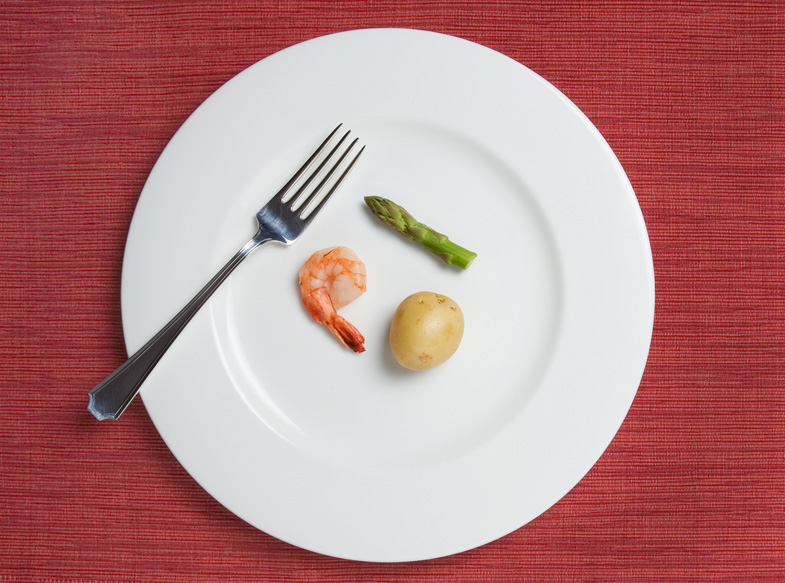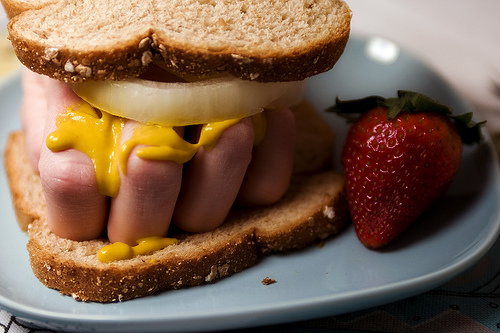From pre-packaged diets to Jenny Craig, it seems that almost everyone is on some sort of diet these days, but do they really work?
According to statistics, approximately 50 million Americans put themselves on a diet every year, but only 5 percent of these dieters successfully keep off the weight, and experts say it’s because restricting certain foods while dieting can cause people to crave them even more, which often leads to “destructive behaviors,” such as overeating.
“Often times, most diets are pretty restrictive of certain food areas and our body will crave whatever it is we’re restricting,” says Melissa Wright, a psychologist who specializes in eating disorders and has been practicing at Sure Haven Addiction Treatment Center in Costa Mesa, Calif. for four years now. “People go too far with diets and won’t eat certain food groups. Then they’ll give in and then go too far.”
It’s kind of like when someone tells you not to look inside of that box. It’s funny how you didn’t even realize that the box was there in the first place, but now you’re dying to see what could possibly be inside… just because someone told you not to look. This restriction leads to temptation, and dieting can have the same don’t-look-in-the-box effect, says Wright, which ultimately detours people from their meal-plan.
So are we doomed if we can’t diet? Nope.
The solution: Go on the Knuckle Sandwich Diet
“Don’t have anything bigger than your fist,” says Mark Desh who has been a personal trainer at 24 Hour Fitness in Los Angeles for 3 years. “All your portions should be that size,” as he holds his fist out in the air.
The trick is to eat less but more, says Desh. In other words, cut your portion sizes in half and have about five-to-six “small meals” a day.
“Your body cannot break down more than 500 calories at one time for at least three hours,” he says. “When you have small portions, the body gets a chance to break down [the food] easily and not store it as fat.”
Chris Capparelli, 55, a mother in Villa Park, Calif., lists off a few of the countless diets she has tried in the past, including the Lindora Scarsdale Diet and Nutrisystem, but three months ago she decided to ditch all the weight-loss programs and start focusing on the size of her meals.
“It took me 8 weeks to lose 10 pounds…. but it hasn’t come back,” say Capparelli who adds that she’s lost a total of 16 pounds since cutting her portion sizes. “It’s better because it’s real life, not fake [weight-loss] shots. It’s more of a life change,” and that helps keep the weight off.
So don’t deprive your body if you’re trying to lose weight because chances are, you’ll just be another statistic. Whether it’s the size of the chicken breast or how much rice you put on your plate, as long as you’re having Knuckle-sized portions, you can eat whatever you want six times a day! Nice.
“I still eat ice cream,” says Capparelli. “Whatever I want… just a smaller portion.”



Brilliant, thank you, I will subscribe to you RSS now!
Fantastic feature, I actually benefited from glossing over it, keep up the hard thoughts.
Loved it. Thanks for posting this. I will definitely come here to find out more and tell my acquaintenances about this website
When you say you can have 5 to 6 meals a day using the knuckle sandwich diet does that mean when you have a meal on your plate, say you have an entre and two sides, does that mean that each item of food on your plate has to be the size of your knuckle or they all together have to be the size of your knuckle. and do those 3 things on your plate count as 3 small meals out of the 6 a day? Are their any more details?
Good questions. Those three items of food on your plate make up ONE meal, but those items should be no larger than your own fists. So you can have a chicken breast, some rice and maybe a few vegetables, but they all should be small “knuckle-sized” portions.
Your six meals a day should look like this: your typical breakfast lunch and dinner (with appropriate “knuckle-sized” portions for each food item) and then three small snacks a day. One snack in between breakfast and lunch, so maybe a banana and some strawberries, then a snack in between lunch and dinner, let’s say an apple with peanut butter or a granola bar, and finally a snack before you sleep, like yogurt and oats. My personal trainer considers a protein shake a meal, so I like to drink a protein shake after my workouts and before dinner as one of my small meals a day.
Does this help?
Yes! What about when you eat a bowl of cereal? Can the amount of cereal in your bowl only be the size of your fist?
The knuckle-sized portions is just a reminder to no go over board with your portions. You certainly don’t have make everything that size because some portions may be a bit smaller or a bit larger, but generally, it’s good to keep portions around that size. When it comes to cereal, that may be difficult to compare to a fist, so I recommend just going by the portion size recommended on the box.